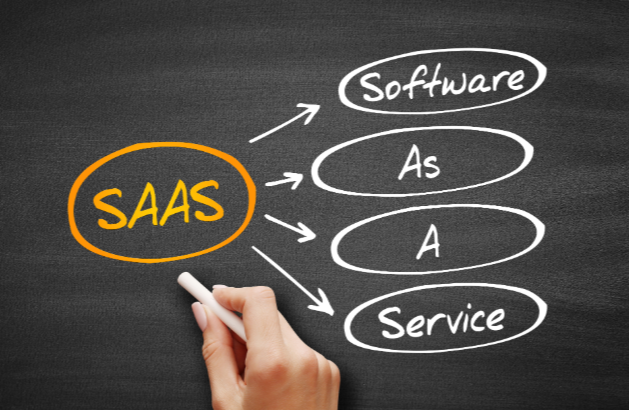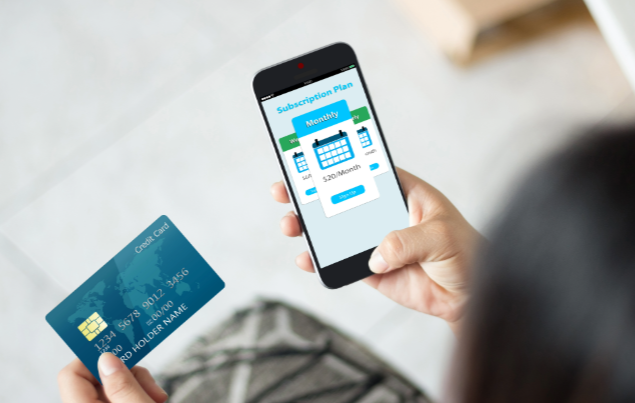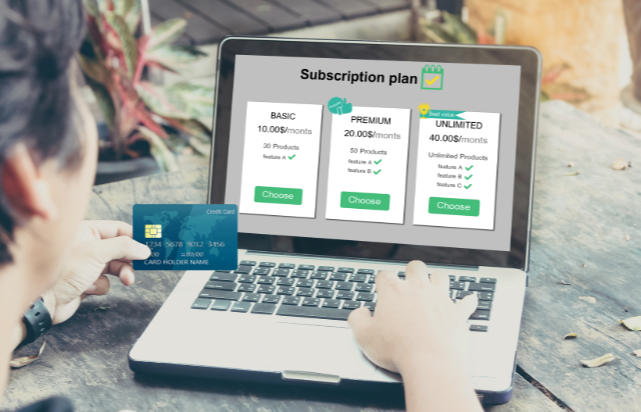Imagine launching a SaaS startup and hitting the revenue jackpot. That’s what nailing your Innovative Pricing Strategies for SaaS Startups can do.
Sure, it sounds like a dream. But let me tell you, with the correct pricing playbook, that dream edges closer to reality.
You’ll soon see how subscription models build reliable income streams and why tiered offerings are vital to capturing diverse markets. And we’re not stopping there—get ready to uncover psychological triggers behind freemium plans that turn users into paying customers.
Dive deep as we unpack flexible options and dynamic tactics tailored just for startups like yours aiming high in the cloud-based skies!
Understanding SaaS Pricing Models

When it comes to the success of a SaaS startup, choosing between subscription pricing and standard pricing is like picking your playing field. Subscription models rope in customers for ongoing payments, while classic pricing shoots for a one-time deal. Now imagine this: The average SaaS company spends about as much time on its pricing strategy as you do on a lunch break—just six hours. Yet this choice could make or break the recurring revenue dream.
Subscription vs. Standard Pricing
The charm of subscription models isn’t just steady cash flow; they’re also kindling for customer loyalty. Let’s say you’ve got two gyms—one charges per visit (standard), and another offers monthly memberships (subscription). With subscriptions, folks are more likely to turn up regularly because they’ve invested in access over time rather than making wallet decisions every visit.
This approach isn’t just pumping up gym goers and tech enthusiasts who’d rather pay regular installments for that sweet project management tool or music streaming service instead of dropping big bucks upfront. Companies love watching those expansion MRR numbers flex with each upgrade or new active user added to an account.
The Time Investment in Pricing Strategy
You might think skimping on strategy planning saves precious minutes now—but it could cost you big down the line when conversion rates sag like week-old birthday balloons. Investing minimal effort into your SaaS pricing model is akin to baking without preheating the oven first; sure, you’ll end up with something edible… probably… but why settle? That extra prep transforms ‘meh’ into Michelin-star-worthy business results.
Thorough market research is essential for SaaS startups. It’s like letting a good steak soak up the spices before it hits the grill. You want your product to be irresistible, making people eager to sign up or align with your offering.
Key Takeaway:
Choosing the suitable pricing model for your SaaS can make or break your revenue. Subscription models boost loyalty and steady cash flow, while standard pricing aims for a one-time purchase. Skimping on this strategy is like baking without preheating—sure, you’ll get results, but they won’t be stellar.
Innovative Subscription Pricing Tactics for Growth

Subscription pricing tactics are the bread and butter of SaaS startups, offering benefits like steady revenue and customer stickiness. But get this: only a fraction of these companies invest enough time to craft their subscription models effectively.
Aligning Price with Perceived Value
Talk about hitting the bullseye. When your price tag mirrors what customers feel they’re getting from your service, you’ve hooked them. Think customizable subscription plans that let users handpick features — because why pay for the whole pie when you want a slice? The secret sauce here is simple: make sure customers see more bang for their buck at every tier.
We’re not talking about chump change either; subscription models can be pivotal in roping new fans and keeping them loyal. And who better to teach us how to maximize value perception than Elena Verna’s insights on LinkedIn? She’s the Dumbledore of growth strategies.
Unleashing Tiered Pricing Like a Pro
If one thing gets potential customers jazzed up, it’s options tailored just for them. By structuring tiered offerings, savvy SaaS businesses cast wider nets over diverse market segments without overwhelming buyers with too many choices – talk about walking the tightrope between variety and simplicity.
This approach isn’t just throwing spaghetti at the wall to see what sticks; it’s an art form backed by data showing its might in boosting conversion rates across different customer bases. Whether it’s project management tools or streaming services, everyone loves feeling Goldilocks is finding her “just right” plan.
Tiered Pricing Strategies for Market Segmentation
When SaaS companies look to tap into different market segments, tiered pricing is like a Swiss Army knife. It’s versatile and can be tailored to meet various customer needs without making their heads spin from too many choices. Think of it as the Goldilocks approach—offering suitable options so everyone finds their perfect fit.
Structuring Your Tiered Offerings
Say you’re running a project management tool platform. You wouldn’t want to hand the same pricing plan to freelancers and large organizations—it doesn’t make sense because they have wildly different demands. That’s where tiered pricing strategies come in handy, helping you serve up packages that hit the sweet spot for each segment of your customer base.
To design these tiers effectively, consider what’s essential at each level: For solo users, maybe it’s about keeping costs low with basic features; mid-size businesses might need more robust analytics; larger enterprises probably require advanced security measures and customization capabilities. The key is balance—you want enough variety between tiers to attract users but not so much that decision fatigue sets in.
This strategy isn’t just good on paper; it works wonders IRL (in real life). By using this method, startups can boost conversion rates since potential customers are more likely to convert when they see a package that feels made for them—and let’s not forget about expansion MRR (monthly recurring revenue) when those customers outgrow their current plans.
But remember, while crafting these offerings may feel like piecing together a puzzle, keep an eye on simplicity. Too many options could overwhelm folks looking at your SaaS product for the first time—a surefire way to scare off any would-be buyers before they even start their free trial or explore your freemium plan.
Key Takeaway:
Think of tiered pricing as the Goldilocks of SaaS strategies: it’s all about hitting that ‘just right’ sweet spot. It helps you cater to everyone, from freelancers to big enterprises, without overwhelming them with choices.
To nail your tiers, focus on what each customer segment needs and balance variety with simplicity. This way, you’re more likely to see a jump in sign-ups and keep those customers climbing the ladder as they grow.
Leveraging Value-based SaaS Pricing
Imagine you’re at a buffet. You pay one price and get access to everything, but what if you only like pasta? This is where value-based SAAS pricing shines in the SaaS world. It’s all about aligning your price points with how much customers think your product rocks their socks off.
Why Value Trump Features Every Time
Sure, the features are excellent – like the sprinkles on a doughnut. But let’s be honest: the taste keeps us returning for more. That’s why savvy SAAS companies ditch feature pricing and bet big on value-based pricing instead. They know when customers see they’re getting bang for their buck, wallets open wider.
Companies throw prices at a wall to see what sticks – don’t be that company. Instead, dig deep into customer perception because loyalty blooms when folks feel they’re striking gold for pennies.
The Sweet Spot of Price Perception
Now grab your magnifying glass and play detective with me here—value isn’t just about cost-plus pricing or charm pricing tricks; it’s an art form where psychology meets economics. Your mission is to find out why Bob from accounting adores using your project management tool while Susan from marketing wants more pizzazz in her creative cloud suite—and then set your price point right there in that sweet spot.
You don’t need an MBA to realize this: If Bob feels he’s winning time back every day thanks to nifty automation features and Susan unleashes her creativity faster than ever before—jackpot—you’ve nailed down perceived value.
Tapping Into The Customer Mindset
Dive into Elena Verna’s insights on LinkedIn or take a gander at Amplitude’s Engagement Matrix if you want some homework—but remember—the key stats show us clear as day: incorporating customer experience into prices is not optional anymore; it’s mandatory for growth-hungry startups ready to rev up now.
Key Takeaway:
Think like your customers and price your SaaS based on their perceived value, not just the features you offer. When customers feel they’re scoring big for less, loyalty kicks in.
Dig into what makes Bob from accounting and Susan from marketing rave about your tool to find that pricing sweet spot. Remember, it’s all about the perceived win-win.
The Psychology Behind Freemium Pricing Models

Imagine walking into a candy store where you can grab a handful of sweets for free, but the gourmet chocolates behind the counter—the excellent stuff—come with a price. That’s freemium pricing in a nutshell.
Freemium Model as an Entry Ticket
Startups often use the freemium model to remove barriers to entry. By offering essential services at no cost, they tap into the psychology of ‘try before you buy.’ This strategy gets users through the virtual door and plants seeds for future upselling opportunities.
As it turns out, once customers enjoy their initial taste of your service—even if it’s just skimming off those free features—they’re more likely to consider paying for premium ones and balancing enough value in that free plan without giving away so much that there’s no incentive to upgrade.
Crafting Irresistible Premium Offers
A successful freemium plan hinges on crafting offers that are too tempting to pass up. But how do you convince happy, non-paying users to open their wallets? It comes down to understanding what advanced or additional features will enhance their experience significantly enough that staying on the free version feels like they’re missing out.
Amplitude’s Engagement Matrix sheds light on user engagement and could be instrumental in identifying which premium features are likely game-changers.
Making Conversion Seamless and Enticing
Fostering conversions from freemium plans isn’t merely about showcasing superior options; it involves making transitioning as smooth as possible. Streamlining this process means ensuring potential customers see clear benefits: improved functionality, increased efficiency, or even enhanced status within an online community—all at compelling price points designed around psychological triggers like charm pricing.
Adopting Flexible SaaS Pricing Options

SaaS companies today are discovering that one size doesn’t fit all in pricing. By embracing flexible SaaS pricing, they’re not just tossing out a net and hoping for the best—they’re crafting nets designed to catch the right kind of fish. Think about a music streaming service; you’ve got your casual listeners and die-hard fans—each with different needs and willingness to pay.
Flexible pricing is like having an ace up your sleeve in a high-stakes poker game. It’s not just about rolling with the punches but throwing some strategic ones, too. Let’s talk about usage-based pricing models, for instance; these allow customers who scale their product usage up or down to feel like they’re only paying for what they need—a win-win situation.
But why stop there? Consider dynamic pricing for startups—it’s like playing the stock market but with price points instead of shares; adjusting prices in real time based on demand or competition can make sure you hit that sweet spot between scaring off the potential customers and leaving money on the table.
The cherry on top? Offering pay-as-you-go pricing lets clients dip their toes without fear of commitment, which could be as appealing as finding extra fries at the bottom of your takeout bag. And let’s face it; flexibility can lead to loyalty quicker than offering freebies—ask anyone who’s been won over by being able to swap gym classes without fuss under a flexible plan.
In short, stepping away from rigid rate pricing models opens doors—and wallets—as diverse as our tastes in coffee shops or project management tools. From freemium plans giving users convert hopes at first sip (or click), customizable subscription plans promising ‘your perfect blend,’ to tiered offerings that have something for everyone—from startups looking at expansion MRR growth spurt strategies—to larger organizations aiming for stability amidst shifting sands—the possibilities are endless because flexibility means keeping pace with change while holding tight onto every customer base segment worth targeting.
Key Takeaway:
Flexible SaaS pricing isn’t a one-size-fits-all game; it’s about crafting the perfect offer for every type of customer. Think usage-based models that fit like a glove, dynamic pricing to hit the sweet spot, and pay-as-you-go options for commitment-phobes—it’s all about giving customers control and making them feel like winners.
The Role of Dynamic Pricing in Maximizing Profits
Dynamic pricing is the sales equivalent of surfing, where businesses ride the waves of market changes. It’s an adaptive strategy that helps startups pivot quickly and tap into real-time data to fine-tune their prices. This method is like having a finger on the pulse of customer behavior, seasonal demand, and competitor moves.
Imagine a world where every SaaS startup can shift gears at lightning speed. That’s what dynamic pricing for startups offers—a way to optimize profits without getting stuck in one gear. Startups leveraging SaaS pricing optimization through dynamic models are always ready to accelerate when they spot an opening or slow down to avoid a crash.
By harnessing this approach, companies don’t just react; they anticipate. Think about it—using historical purchase patterns combined with current trends could mean predicting your next big sale before your customers know they’re ready to buy. Now, isn’t that something?
In practice, dynamic pricing lets you introduce new products or services confidently because you’ve got more than a gut feeling backing up those price points—complex data guiding you through uncharted territory like a GPS for business growth.
Keeping Pace with Market Demand
Flexible SAAS pricing structures are crucial to keeping pace with ever-changing market demands. They let customers feel in control while allowing businesses to adjust rates as needed—the epitome of mutual benefit.
So how does it work? Imagine adjusting prices based on user engagement levels—a streaming service might charge less during off-peak hours but bump up rates when everyone’s binge-watching their favorite show over the weekend.
Adapting Prices for Customer Segments
Different strokes for different folks—that’s what segmentation is all about in tiered pricing strategies. Dynamic pricing allows customization so finely tuned that each segment feels like you made them first-class passengers on their private jetliner…without breaking your bank or theirs.
- If young professionals swarm your project management tool by day but creatives dominate at night, why not price it accordingly?
- Gaming platforms could offer lower fees during school hours but raise them when there’s high traffic post-homework completion (sneaky yet clever).
- SaaS companies using usage-based models will find gold mines within active user segments willing to pay more for premium features—as long as those features sparkle brighter than diamonds.
Key Takeaway:
Dynamic pricing is the sales surfboard for riding market waves, helping SaaS startups pivot on the fly to optimize profits. It’s all about tapping into real-time data and anticipating customer needs—think of it as your business GPS.
Flexible pricing structures are crucial to staying ahead—they let you adjust rates based on user engagement or segment demand. Dynamic pricing means tailoring offers so finely that every customer feels like they’re flying first class, whether offering off-peak discounts or premium features at a premium price.
Implementing Pay-as-You-Go and Usage-Based Models
SaaS startups are turning heads with pay-as-you-go pricing, a model that’s as straightforward as your morning coffee run: you only fork over cash for what you use. It’s like hopping in a cab, where the meter ticks up with every mile.
But why does this matter? Well, imagine giving customers the reins to control their spending. That’s usage-based pricing models for you—total game changers in customer empowerment. They allow folks to match their costs directly with consumption levels of your service—no more guessing games or budget busters.
This isn’t just pie-in-the-sky thinking; it translates into real dollars and cents benefits for both parties. Customers dig the transparency, while businesses can lean on steadier revenue streams thanks to those active users who keep returning for more help.
The Flex Appeal of Usage-Based Pricing
In our fast-paced digital buffet, usage-based pricing gives customers a taste without forcing them down an all-you-can-eat route they might not be ready for. Think about streaming services or music platforms—they’ve got us hooked by offering free beats but reel us in when we crave those premium features enough to pay some dough.
We’re seeing SaaS companies adopt similar tactics because, let’s face it, flexibility is king. By dangling the carrot of additional features at various price points, these savvy businesses attract users like bees to honey, which spells out potential customer growth and recurring revenue success stories left and right.
SaaS Price Experimentation Techniques
Experimenting with pricing is like a chef tweaking a recipe to perfection. SaaS is crucial for growth and keeping pace in the competitive market. Discuss how A/B testing and data analysis are vital ingredients in this process.
Testing Waters with A/B Testing
To start, imagine two versions of your SaaS product at different price points being offered to similar audiences simultaneously; that’s A/B testing for you. By undervaluing your service, this method helps you see what sticks without turning customers away due to sticker shock or leaving money on the table.
One surprising twist? Sometimes, lower prices can turn potential customers off, hinting that they might associate price with quality. You may need heftier discounts than expected to nudge them towards conversion—a delicate balance between perception and cost-efficiency needs attention here.
Analyzing Results for SaaS Pricing Optimization
Digging into analytics post-experiment uncovers patterns essential for refining your SaaS pricing strategy. These insights could reveal if usage-based pricing models resonate more than flat-rate ones or vice versa, depending on customer behavior regarding product usage.
Gathering such data enables smarter decisions—like whether introducing pay-as-you-go pricing will encourage more sign-ups from those hesitant about commitment or if adding extra features justifies an increase in price points within flexible pricing structures tailored to meet diverse needs across your customer base.
The Role of Market Trends in Price Experimentation in SaaS
Last but not least, staying alert to market trends when conducting price experimentation allows startups like yours to be agile—you’re better equipped at adjusting strategies as needed rather than sticking rigidly to one approach because ‘it worked before.’ Dynamic adjustments based on real-time feedback keep you ahead of the curve—or should we say wave?
Key Takeaway:
Think of SaaS pricing like a chef perfecting a dish—A/B testing and data analysis are essential. Test different prices to see customers’ preferences, balancing cost with perceived value.
Dive into analytics after experiments to fine-tune your strategy. Use market trends for agility in pricing, staying ahead of the competition by adapting quickly.
FAQs in Relation to Innovative Pricing Strategies for Saas Startups
What is the best pricing strategy for a startup?
Value-based pricing tops the list; it aligns your price with customer perceptions and maximizes profits.
How do I create a SaaS pricing model?
Analyze customer value, consider cost-plus margins, peek at competitors, and then tweak through testing.
Which pricing strategy can be used when introducing an innovative product?
Skin in penetration pricing to hook early users or skim for premium feels. Adapt as you grow.
What is decoy pricing SaaS?
It’s a crafty move where an unattractive option makes another seem like a steal. It nudges folks to upgrade.
Conclusion
Locking down innovative pricing strategies for SaaS startups can be the game-changer you need. Remember, subscription models promise a steady cash flow. Tiered offerings are your ticket to meeting diverse customer needs.
Dig into value-based pricing—it’s all about what customers gain from your product. Freemium plans? They’re more than just freebies; they’re a powerful lure for potential paying users.
Embrace flexibility in your plans and stay dynamic with prices that adapt on the fly. And don’t forget pay-as-you-go options—they put power back in the hands of your users.
Innovative Pricing Strategies for SaaS Startups aren’t just buzzwords—they’re stepping stones to building that resilient revenue stream every cloud-based conqueror seeks!
